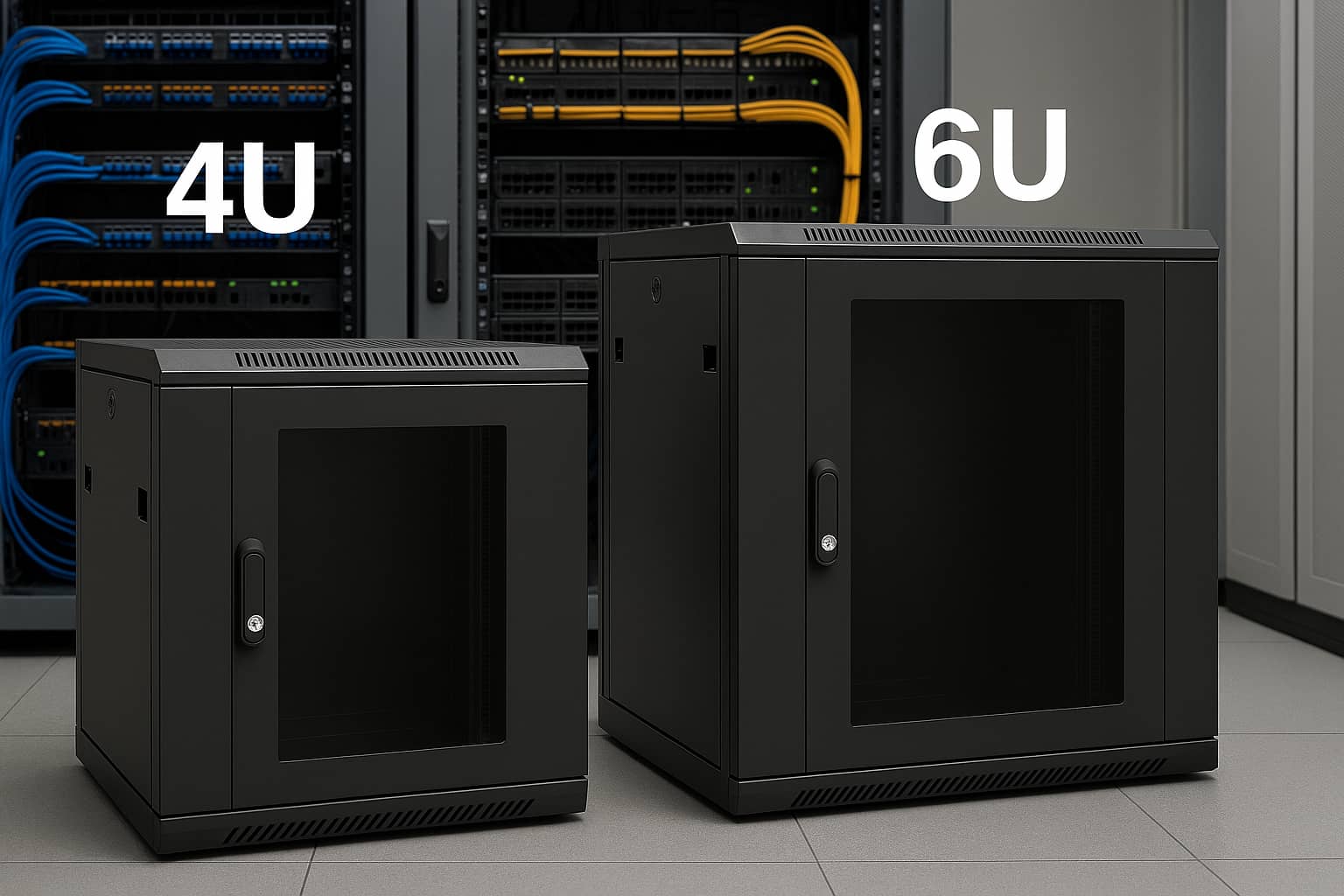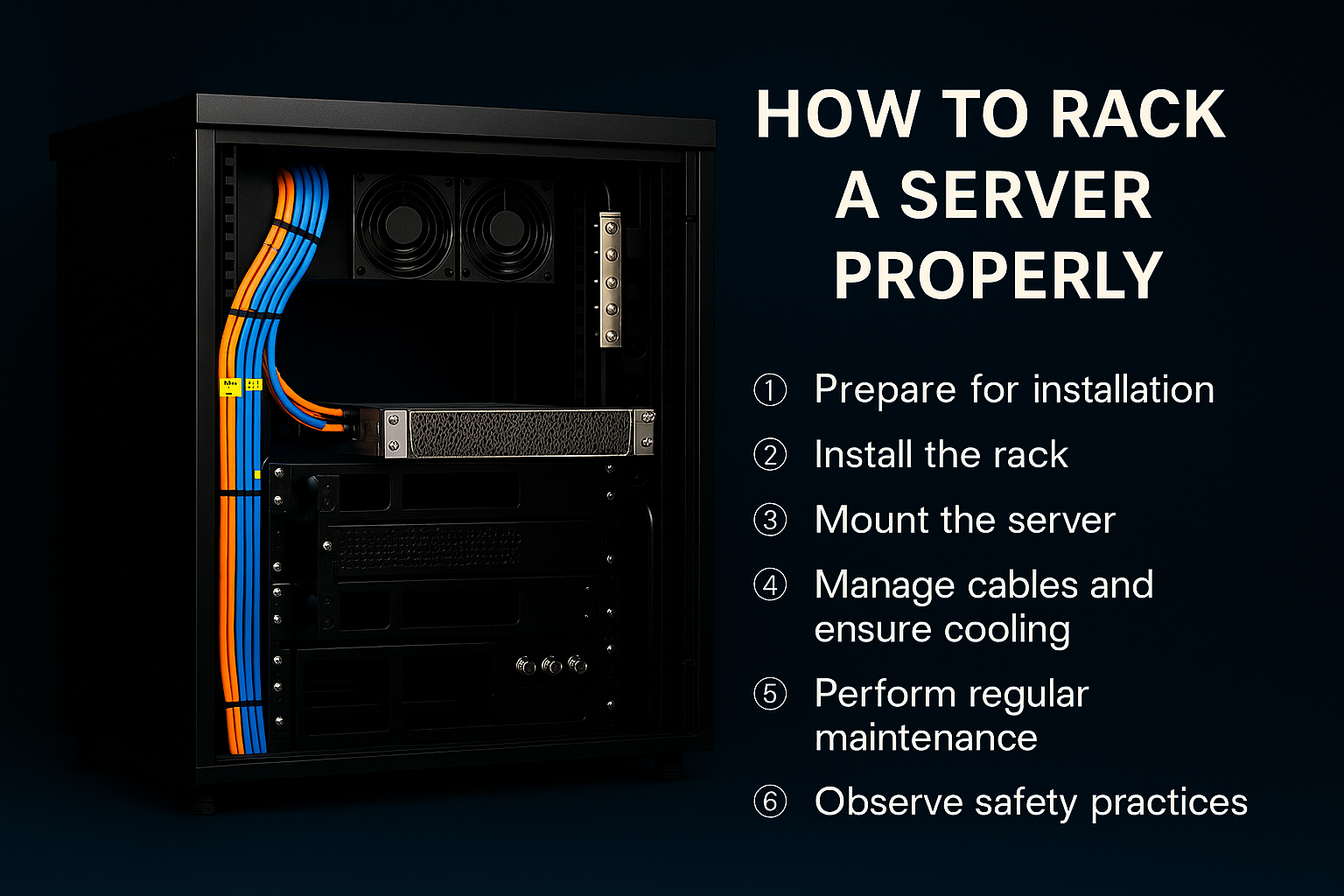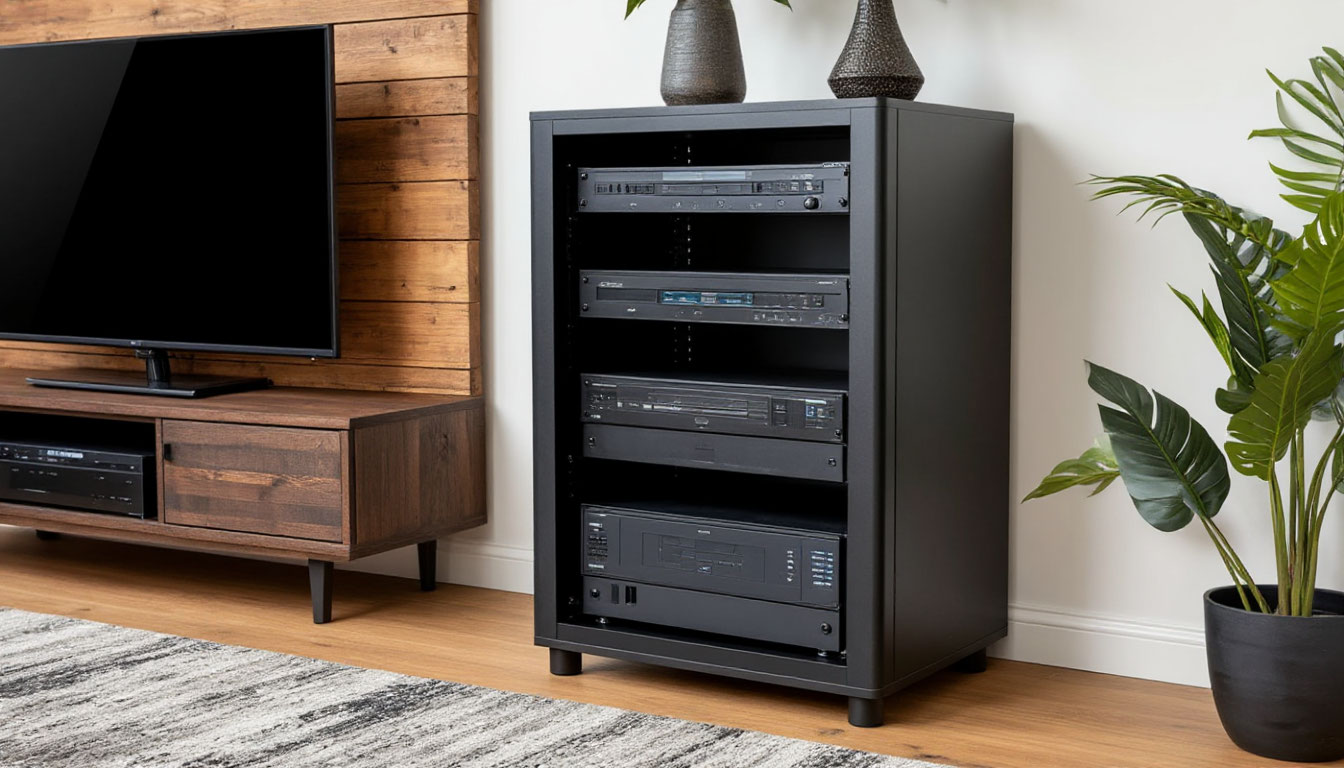
4U vs 6U Rack Units: How to Choose the Right Format
A rack unit (U) is one of the key dimensions in the telecom industry. The parame...

When arranging a server infrastructure and allocating equipment in a cabinet, a proper layout and correct fastening are of vital significance. Reliable fastening ensures the safe installation and durable support of expensive and vulnerable hardware. Thus, correct and appropriate equipment fastening plays a key role in network system operational durability.
Servers come as the main component of a network system; they serve the function of the “heart” and “brain” of the entire system at the same time. They are commonly installed in cabinets using mounting rails. This solution is beneficial due to two reasons, namely, enhanced server security and relative cost efficiency.
Rails are produced specifically for this very type of IT hardware and are equipped with all the needed holes and fasteners. For instance, chassis have holes for nuts and screws, inner rails have J-slots or keyhole slots that lock shoulder screws, and so on. Well-equipped rails serve to support heavy servers and guarantee their reliable and durable fastening. Thus, enhanced security without the risk of tipping over or slippage exists.
Cost-effectiveness comes as another reason for choosing rails. They are relatively cheap and do not require extra investments. However, alternative solutions are offered on the modern market. It’s possible to mount servers on desktops or use shelves and brackets. So, in the article, we’re going to consider how to rack mount a server without rails and in what cases this strategy is applied.
Setting a network infrastructure starts long before equipment housing in racks and cabinets. The arrangement of an IT system is a multi-step process that requires thorough preparation. Thus, do not hurry up to proceed to accommodate devices into furniture. Preceding steps are no less important. When getting prepared for network system setup and server mounting, make sure to go through the following steps:
When all the needed components are ready, system technicians can proceed to set up the system and hardware installation. Note that most cabinet models include just vertical posts with or without side walls. So, users need to attach extra accessories to support hardware and improve the ergonomic use of cabinet space.
Although rails come as the most popular type of supporting structure, there are also alternative solutions for accommodating servers in racks and cabinets. Modern manufacturers of server furniture offer the following accessories:
Each option has its pros and cons. To find the best solution for your case, you need to primarily consider the server’s size and weight. Make sure that it will fit the rack in height and width. Depending on the server size, horizontal and vertical mounting is possible. However, it’s also important to ensure that the weight capacity is matching to prevent falling and breaking. A detailed guide on how to pick appropriate accessories based on cabinet dimensions is provided in the article. Study all features of server furniture dimensions to choose an optimal shelf or other supports.

Finally, when all the preparatory procedures are done and technicians are equipped with all the tools, it’s possible to proceed to the installation process. Keep in mind that every step requires thorough consideration and precise attention. Here’s a step-by-step guide:
For IT hardware, it’s critical to ensure security and stability throughout the whole period of serviceability. Any breaches of supporters or construction defects can lead to insecurity and result in breaks, which entails unexpected expenses. Moreover, the issue of server security is vital for the IT system since it comes as its heart, and the system won’t function without servers. Thus, the issue of server security is paramount for technicians. Make sure to use the following tips to ensure server security:
The durability and proper functioning of network systems highly depend not only on the correct equipment allocation but also on timely maintenance and repair. Thus, the post-installation phase is no less important. Make sure to create a schedule where all checks will be allocated, and strict timing will be appointed.
Network systems are firmly rooted in our lives. We entrust a lot of procedures to AI. Business workflows with data storage, processing, and computing are not possible without digital technologies. Thus, IT systems penetrated all spheres of life, offering upgraded functionalities.
Arranging the network system is a complicated process, where it’s necessary to calculate the capacity, make a list of equipment to be used, design a layout, find furniture, etc. Servers are some of the main components of each system. However, while being valuable and expensive, they are sensitive to damage. This is why they require reliable mounting. Although mounting rails are commonly used, nowadays, alternative solutions, such as brackets and shelves, are offered for server installation. They ensure high security and better ergonomics at a reasonable cost. If you plan to use them, make sure to study the installation procedure and follow the above-mentioned guide.

A rack unit (U) is one of the key dimensions in the telecom industry. The parame...

Servers come as indispensable elements of a network infrastructure. They serve a...

Most home owners want to enjoy movies in a good quality and with good sound. Thu...